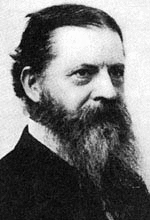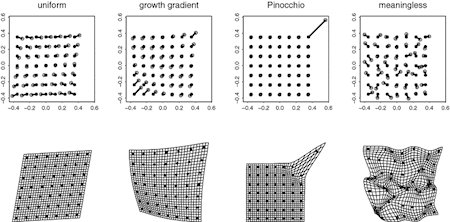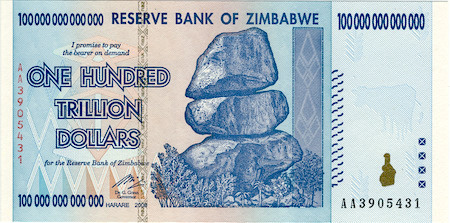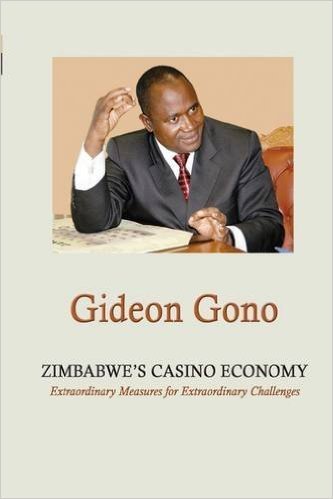Marc Abrahams's Blog, page 272
April 30, 2016
Intimate exaltation in Japanese, in English

How does one come to understand the concept and role of intimate exaltation — especially intimate exaltation in Japanese — if one does not speak Japanese or live in Japan? One place to start:
“Speech-style shifts and intimate exaltation in Japanese,” Yoko Hasegawa, Proceedings of the 38th Annual Meeting of the Chicago Linguistic Society, 269-284, 2002. The author [pictured here] is Professor of Japanese Linguistics in the Department of East Asian Languages and Cultures at the University of California.
Professor Hasegawa has also written about “Soliloquy as an index of intimate exaltation“.

April 29, 2016
mini-AIR: glowing cockroaches, scorpions, and a Smelly publication
 The April issue of mini-AIR (our monthly e-mail newsletter) just went out. (mini-AIR is a wee little supplement to the magazine). Topics include:
The April issue of mini-AIR (our monthly e-mail newsletter) just went out. (mini-AIR is a wee little supplement to the magazine). Topics include:
Fluorescence in Cockroaches
Optical Properties of a Scorpion Limerick Contest
Reducing Scorpion Fluorescence
and more
It also has info about upcoming events.
Mel [pictured here] says, “It’s swell.”
mini-AIR is the simplest way to keep informed about Improbable and Ig Nobel news and events.
Want to mini-AIR e-mailed to you every month? Just opt in.

‘Crackers’ (recordings of joints cracking)
 Circa 1997, Professor Christof Migone (now at Western University, Ontario, Canada) placed an ad. in a local Ottawa newspaper requesting anyone with ‘cracking’ joints (fingers, neck, back, etc etc) to participate in an audio recording session. The Ottawa based Gallery 101 was about to host an exhibition called ‘Incredibly Soft Sounds’ in January 1998, which featured the professor’s recordings under the title ‘Crackers’. Audio files of various ‘Crackers’ recordings can be found here. Or, if you prefer the sound, look and feel of a CD (over .mp3) a selection of Crackers recordings are also available on polycarbonate [no vinyl as yet].
Circa 1997, Professor Christof Migone (now at Western University, Ontario, Canada) placed an ad. in a local Ottawa newspaper requesting anyone with ‘cracking’ joints (fingers, neck, back, etc etc) to participate in an audio recording session. The Ottawa based Gallery 101 was about to host an exhibition called ‘Incredibly Soft Sounds’ in January 1998, which featured the professor’s recordings under the title ‘Crackers’. Audio files of various ‘Crackers’ recordings can be found here. Or, if you prefer the sound, look and feel of a CD (over .mp3) a selection of Crackers recordings are also available on polycarbonate [no vinyl as yet].
Note: The 2009 Ig Nobel Medicine Prize was awarded to Donald L. Unger, of Thousand Oaks, California, USA, for investigating a possible cause of arthritis of the fingers, by diligently cracking the knuckles of his left hand — but never cracking the knuckles of his right hand — every day for more than sixty (60) years.

April 28, 2016
False ‘missing toe’ sensation(s) [digital agnosia]
Do you ever get an uncanny feeling that one of your toes is missing, despite the fact that they’re all there? You’re not alone.
“To the best of our knowledge, the present study is the first to document the [erroneous] experience of a ‘missing toe’ in healthy volunteers.”
“Nineteen young adult participants underwent tactile stimulation of the digits [toes] with the eyes closed and verbally reported the identity of the stimulated digit. In the majority of individuals, responses to the second and third toes were significantly biased toward the laterally neighboring digit. The directional bias was greater for the nondominant foot and was affected by the identity of the immediately preceding stimulated toe. Unexpectedly, 9/19 participants reported the subjective experience of a ‘missing toe’ or ‘missing space’ during the protocol.”
Note: “9/19” in this context is taken to mean nine-out-of-ninteen, or, if you prefer, nine-nineteenths (rather than nine-divided-by nineteen) that’s to say, roughly equivalent to 47%.
See: Tactile Toe Agnosia and Percept of a ‘‘Missing Toe’’ in Healthy Humans in: Perception, 2016, Vol. 45(3) 265–280. Authors: Nela Cicmil (Department of Physiology, Anatomy & Genetics, University of Oxford,UK and The Medical School, University of Oxford, John Radcliffe Hospital, UK). Achim P. Meyer (Bernstein Center for Computational Neuroscience, Humboldt University, Berlin, Germany) and John F. Stein (Department of Physiology, Anatomy & Genetics, University of Oxford, UK). in: Perception, 2016, Vol. 45(3) 265–280

April 27, 2016
April 30 as final day for retiring the Zimbabwe $100-trillion-dollar bills
The Reserve Bank of Zimbabwe announced its official intention that April 30, 2016, will be the final day for paying anything—anything at all—to people who turned in the now-decommissioned $100,000,000,000,000 bills, $10,000,000,000,000 bills, $1,000,000,000,000 bills, and old bills of lower denominations. That announcement:
“Demonetisation of the Zimbabwean Dollar — The demonetisation of the Zimbabwe dollar which was announced by the Minister of Finance and Economic Development in the 2014 National Budget, as well as, in the Mid-term Fiscal Review, and in the Monetary Policy Statement of January 2015, commenced on 15 June 2015 and ended on 30 September 2015….The Bank is currently working with the Deposit Protection Corporation (DPC) to ensure that account holders whose balances were held with closed banks are paid. DPC is expected to fully pay out these beneficiaries by the end of April 2016. ”
A previous announcement, on June 9, 2015, explained that “Demonetisation is not compensation for the loss of value of the Z$ due to hyper-inflation. It is an exchange process.”
Here are the announced exchange rates for money that people had deposited in banks:
a) Accounts with balances of Zero to Z$175 quadrillion will be paid a flat US$5.
b) Accounts with balances above Z$175 quadrillion will be paid the equivalent value after applying the UN exchange rate of US$1/Z$35 quadrillion or US$1/Z$35,000 (revalued).
Slightly different rates were on offer for “walk-in cash customers”:
Banks will exchange ZW$ cash for US$ equivalent for walk-in cash customers at an exchange rate of Z$250 trillion to US$1 for 2008 note series and Z$250 to US$1 for 2009 note series.
NewsDay published a journalistic account of all this.
The old currency has a celebrated place in history. The 2009 Ig Nobel Prize for mathematics was awarded to the then head of the bank, Dr. Gideon Gono, for giving people a simple, everyday way to cope with a wide range of numbers — from very small to very big — by having his bank print bank notes with denominations ranging from one cent ($.01) to one hundred trillion dollars ($100,000,000,000,000).
Dr. Gono wrote a book explaining why that currency was a good idea that other countries should adopt. The book is Zimbabwe’s Casino Economy — Extraordinary Measures for Extraordinary Challenges, Gideon Gono, ZPH Publishers, Harare, 2008, ISBN 978-079-743-679-4.

The special SMELLY issue of the magazine is out!
The special SMELLY issue (vol. 22, no. 2) of the magazine (the Annals of Improbable Research) is now out! It’s bursting (as are all our issues) with carefully culled, improbable research snippets about everything, from anywhere, more or less. Click on the cover image, below, to see the issue’s table of contents and some of the articles.
This is the second issue of our all-PDF era. We hope you enjoy it, and that you will spread the word to friends and colleagues! There are additional new columns, and we have further tweaked the new design (by the one and only Geri Sullivan) to make it even more comfy to read on smartphones, as well as on larger screens.
If you are a subscriber, you should have received an email letting you know the new issue is available, with directions for downloading your copy.
If you are not yet a subscriber, you can purchase that issue —or subscribe!—on our Gumroad page.
Back issues of the magazine, and tables of contents, are available on the Improbable website.
Special thanks to Lauren Maurer Trew, our bookmaster, for working much of the tech magic that brought the magazine into this new era.

Leadership by a man with a big mouth (Podcast 61)
Does having a big mouth make a man more likely to become a political leader? A research study asked that very question. We discuss it, in this week’s Improbable Research podcast.
SUBSCRIBE on Play.it, iTunes, or Spotify to get a new episode every week, free.
This week, Marc Abrahams —with dramatic readings by Daniel Rosenberg — tells about:
The Big Man and his Big Mouth — “The Big Man Has a Big Mouth: Mouth Width Correlates With Perceived Leadership Ability and Actual Leadership Performance,” Daniel E. Re and Nicholas O. Rule, Journal of Experimental Social Psychology, volume 63, March 2016, pp. 86–93. Here is a photo of a man with a big mouth that may correlate with his perceived leadership ability and/or actual leadership performance:

The mysterious John Schedler or the shadowy Bruce Petschek perhaps did the sound engineering this week.
The Improbable Research podcast is all about research that makes people LAUGH, then THINK — real research, about anything and everything, from everywhere —research that may be good or bad, important or trivial, valuable or worthless. CBS distributes it, on the CBS Play.it web site, and on iTunes and Spotify).

April 26, 2016
Morphometrics maven: morphometricians must and can do better
 A grizzled morphometrician casts a cold, gleeful eye at his field, and urges himself and his fellow morphometricians to do better. Morphometrics is the the continuing attempt to carefully measure and compare shapes and sizes. This morphometrician’s happy diatribe is in the form of a long, new paper:
A grizzled morphometrician casts a cold, gleeful eye at his field, and urges himself and his fellow morphometricians to do better. Morphometrics is the the continuing attempt to carefully measure and compare shapes and sizes. This morphometrician’s happy diatribe is in the form of a long, new paper:
“The Inappropriate Symmetries of Multivariate Statistical Analysis in Geometric Morphometrics,” by Fred L. Bookstein (pictured here], Evolutionary Biology, epub 2016, pp 1-37. The author, who is at the University of Washington and the University of Vienna, writes, in densely grand language:
“In today’s geometric morphometrics the commonest multivariate statistical procedures, such as principal component analysis or regressions of Procrustes shape coordinates on Centroid Size, embody a tacit roster of symmetries—axioms concerning the homogeneity of the multiple spatial domains or descriptor vectors involved—that do not correspond to actual biological fact. These techniques are hence inappropriate for any application regarding which we have a-priori biological knowledge to the contrary (e.g., genetic/morphogenetic processes common to multiple landmarks, the range of normal in anatomy atlases, the consequences of growth or function for form). But nearly every morphometric investigation is motivated by prior insights of this sort. We therefore need new tools that explicitly incorporate these elements of knowledge, should they be quantitative, to break the symmetries of the classic morphometric approaches. Some of these are already available in our literature but deserve to be known more widely…”
Here’s a bit of flavored detail from the paper:


Group theory in the bedroom (OR: As the mattress turns…)
Brian Hayes‘s essay (in American Scientist) called “Group Theory in the Bedroom” applies advanced mathematics to what happens in the bedroom. The bedroom is the room with the bed in it. The essay begins:
Having run out of sheep the other night, I found myself counting the ways to flip a mattress. Earlier that day I had flipped the very mattress on which I was not sleeping, and the chore had left a residue of puzzled discontent. If you’re going to bother at all with such a fussbudget bit of housekeeping, it seems like you ought to do it right, rotating the mattress to a different position each time, so as to pound down the lumps and fill in the sags on all the various surfaces. The trouble is, in the long interval between flips I always forget which way I flipped it last time. Lying awake that night, I was turning the problem over in my head, searching for a golden rule of mattress flipping….
The search for a mattress-flipping algorithm leads to some diverting mathematics, not just in the bedroom but also in the garage and at the breakfast table. Furthermore, although I can offer no golden rule for mattress flipping, I do have some practical advice….
Particularly helpful is the branch of mathematics known as group theory, which is the traditional tool for studies of symmetry.…

April 25, 2016
Orang-utans blow raspberries too
 If you thought that humans were the only animal proficient at blowing a raspberry (a.k.a. voiceless exolabio-lingual trilling*1) think again. Orang-utans, for example*2 can and do blow them, usually when nesting [for reasons as yet unclear to us]. If you would like to hear an orang-utan blowing a raspberry, you’re in luck – the authors of a 2012 PloS ONE paper provide a recording of one (of the 35 which they transcribed in Sumatra and Borneo). [.wav format].
If you thought that humans were the only animal proficient at blowing a raspberry (a.k.a. voiceless exolabio-lingual trilling*1) think again. Orang-utans, for example*2 can and do blow them, usually when nesting [for reasons as yet unclear to us]. If you would like to hear an orang-utan blowing a raspberry, you’re in luck – the authors of a 2012 PloS ONE paper provide a recording of one (of the 35 which they transcribed in Sumatra and Borneo). [.wav format].
As featured in: Call Cultures in Orang-Utans? Wich SA, Krützen M, Lameira AR, Nater A, Arora N, Bastian ML, et al. PLoS ONE 7(5): e36180
*Notes:
1. Although the raspberry has been classified (Pike, Kenneth L. (1943). Phonetics: A Critical Analysis of Phonetic Theory and a Technique for the Practical Description of Sounds) as a ‘voiceless exolabio-lingual trill’, implying the use of the tongue, Improbable suggests or contends or possibly even asserts that it’s quite easy to blow one without the use of one’s tongue. Discuss.
2. Raspberry-blowing species include humans, chimpanzees and walruses – you may know of others, in which case you can keep it to yourself, or alternatively, why not let our readers know by commenting below?

Marc Abrahams's Blog
- Marc Abrahams's profile
- 14 followers






